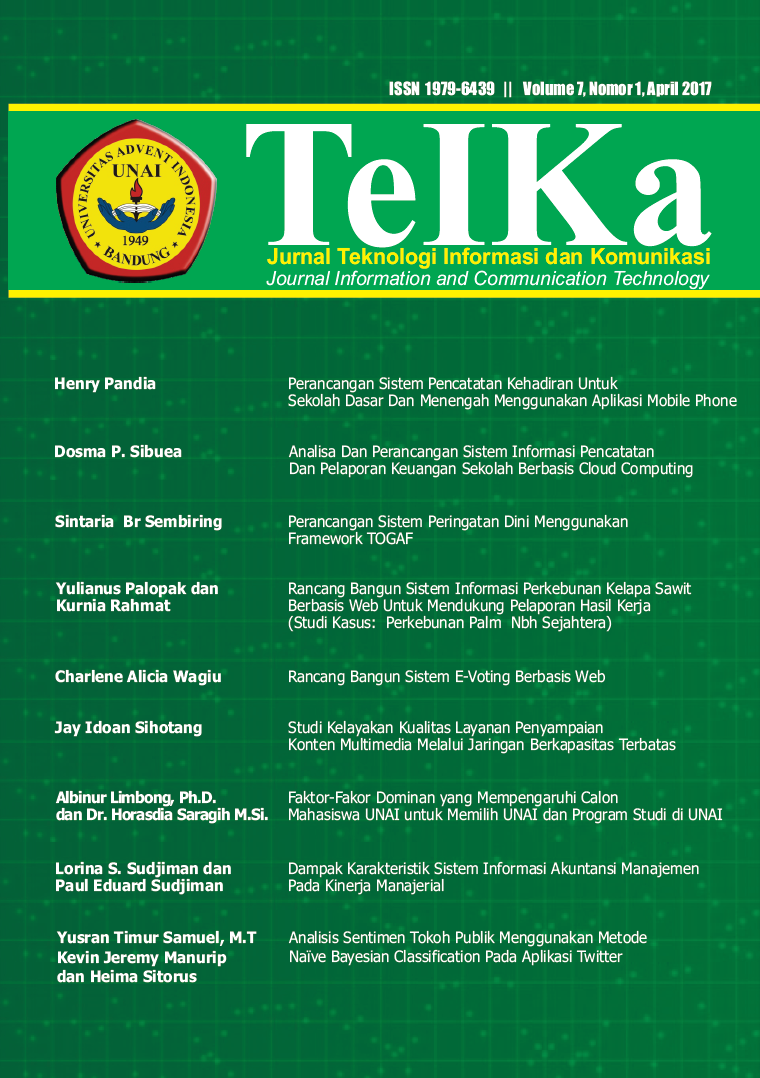E-VOTING SYSTEM DESIGN BASED ON WEB
Keywords:
Election, e-Voting, Student Council, Web DesignAbstract
The election process becomes very important in determining the desired outcome for the voters. The election process is often hampered by a variety of issues, such as the process of gathering and recounting the result sometimes takes time. For that we need a system that can facilitate the selection process so that it can provide quick and accurate results. The purpose of this study is to build a system that can provide convenience for students of the Faculty of Information Technology UNAI in running the democratic process to select the Chairman of the Student Association. The system is designed web-based so it will be easier in the process of taking voting, vote counting and announcement of the selected winners. The method used in building this system is using SDLC method with Waterfall model which consists of stages of Analysis, Design, Implementation and Maintenance. The results of the design of this system can be used in selecting the pair chairman and vice chairman of Student Association Faculty of Information Technology UNAI. The election process can run more orderly, regularly and faster especially in vote counting and winner announcement because it is done through the system. It is expected that in the future this system can be developed and applied to other election process and can be made on other platforms.
Downloads
References
Susanto, Azhar, 2013. “Sistem Informasi Akuntansi”. Bandung: Lingga Jaya.
Liew, Anthony, 200. “Understanding Data, Information, Knowledge And Their Inter-Relationships”. Journal of Knowledge Management Practice, Vol. 8, No. 214
Sutarman, 2012.“Pengantar Teknologi Informasi”.Jakarta: Bumi Aksara
Kertahadi, 2007. “Dasar-Dasar Sistem Informasi”. Yogjakarta: STIKOM.
Downloads
Published
How to Cite
Issue
Section
License
The submitting author warrants that the submission is original and that she/he is the author of the submission together with the named co-authors; to the extend the submission incorporates text passages, figures, data or other material from the work of others, the submitting author has obtained any necessary permission.
Articles in this journal are published under the Creative Commons Share Alike Attribution Licence (CC-BY-SA What does this mean?). This is to get more legal certainty about what readers can do with published articles, and thus a wider dissemination and archiving, which in turn makes publishing with this journal more valuable for you, the authors.
By submitting an article the author grants to this journal the non-exclusive right to publish it. The author retains the copyright and the publishing rights for his article without any restrictions.










